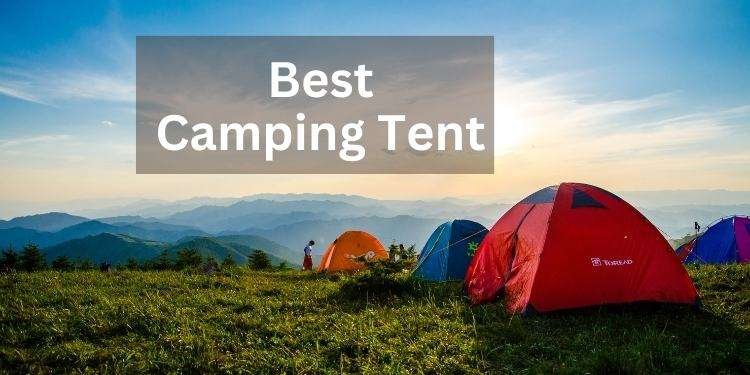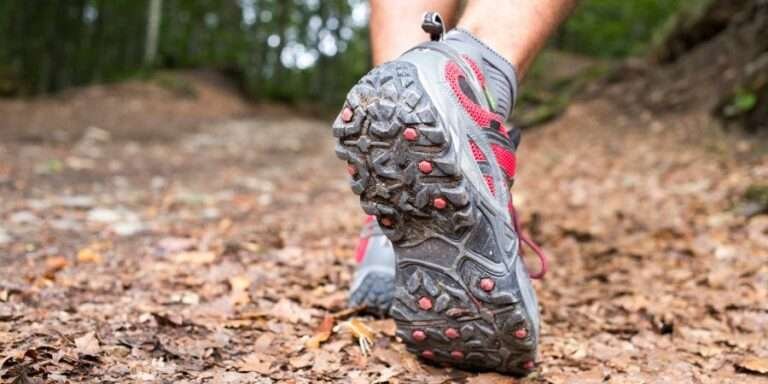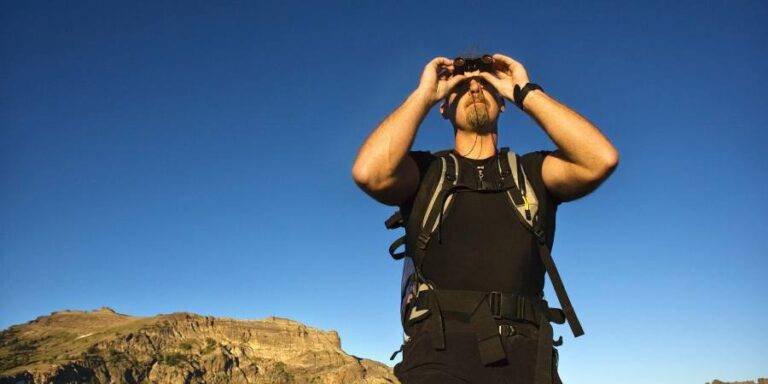Hiking trips are like a doorway to discovering the beauty of nature while giving you a chance to stay active and refresh your mind. And when you’re heading out on a hike, having the right hiking gear is super important. It’s like your hiking buddy, making sure you’re comfy, safe, and having a blast on the trails.
This comprehensive article will cover the best hiking gear you must bring on your trip. So, let’s get started.
What is Hiking Gear?
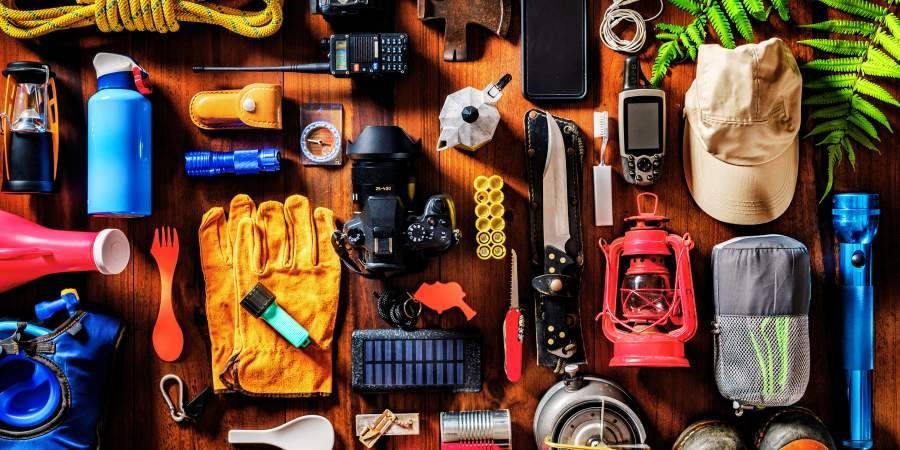
When hiking, you’ll need a bunch of equipment to prepare for whatever nature throws at you. You’ll need good shoes, clothes that keep you safe, and tools to find your way. You won’t have a great hiking trip if you don’t have each of these pieces.
Why is Having the Best Hiking Gear Essential?
Having the best hiking gear is super important to ensure you stay safe and have a great time outdoors. If your gear doesn’t fit well or isn’t up to scratch, it can lead to problems like discomfort, injuries, or even emergencies, which can ruin your trip.
Good-quality hiking equipments provide safety, comfort, and fun while exploring nature. That means. you can enjoy the great outdoors without being concerned about your gear.
15 Best Hiking Gear List
15 hiking equipment list you should have in your outdoor adventure. These are,
- Shoes
- Backpack
- Clothes
- Navigation Tools
- Hydration System
- Snacks
- Tent
- First aid kit
- Headlamp or Flashlight
- Multi-Tool
- Sunglasses or Sunscreen or Hat
- Fire Starter
- Camera or Binoculars
- Hiking Poles
- Map Case or Cover
Hiking Shoes

Choosing the best hiking boots is crucial for a comfortable and enjoyable trail experience. Firstly, think about the hiking trip you are planning to do and what footwear you need for that particular trail. So, before buying hike trail shoes, choose wisely as there are plenty of brands available. You can wear hiking sandals with different features if you are comfortable and the season demands.
For light hiking trails, low-cut boots may suffice, offering flexibility and breathability. Moderate trails may call for mid-cut boots, providing ankle support and balance. For challenging trips, high-cut boots with robust ankle support become essential.
Material matters too. Full-grain leather is durable and water resistant, making it perfect for tough conditions, whilst synthetic materials are lighter and dry faster, making them great for day hikes.
For grip in slippery hiking areas, look for hike boots with high-quality rubber outsoles and aggressive tread patterns. Good hiking waterproof shoes are an investment, and selecting the correct combination of features and price is important.
Hiking Backpack
Hiking backpacks are a must-have accessory for hikers. This hiking pack is specially designed and offers a diverse solution to carry all the necessary hiking equipment for a successful trail. These backpacks are made of durable material and efficient functionality in mind. According to the specific needs of hikers, these backpacks offer comfort and convenience under different conditions.

One of the key features of a hike backpack is its ergonomic design. These backpacks are crafted to distribute weight evenly across the shoulders and hips, minimizing strain on the back during extended periods of wear. Padded shoulder straps, hip belts, and back panels contribute to a comfortable fit, allowing hikers to travel challenging trails with ease.
Versatility is another great feature of these backpacks. Multiple compartments and pockets allow for organized storage of gear, ensuring easy access to hiking essentials such as hiking water bottles, snacks, and navigation tools. Some backpacks also feature specialized compartments for hydration reservoirs, making it convenient for hikers to stay hydrated on the go.
The choice of a hike backpack can significantly impact the overall trail experience. With dynamic design and functionality at its core, a well-chosen hiking backpack becomes an essential companion for adventurers seeking hikers to explore the great outdoors.
Hike clothes
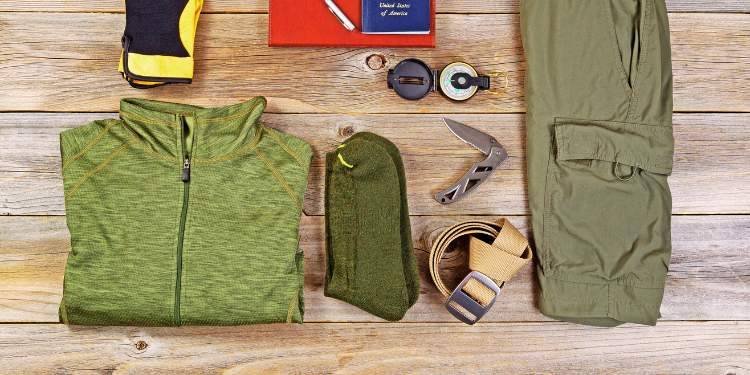
Weather-appropriate clothing is essential for people traveling in different weather conditions. Proper hiking outfits not only improve comfort but also play a vital role in ensuring safety and well-being. Insulating layers, thermal fabrics, and waterproof hiking jackets are required in cold weather to maintain body heat.
On the other hand, breathable textiles such as moisture-wicking materials and loose-fitting clothes and breathable hiking pants & hiking socks assist heat by promoting airflow and minimizing overheating in hot weather.
In modern days, hiking clothes are a lot more fashionable than ever before. Many designers mix style and functionality in clothes, which is great. Finally, choosing an ideal hike outfit should be a goal that ensures safety and comfort on hike trails.
Navigation Tools
On the trail, having reliable navigation equipment is important to ensure a safe and satisfying trip. Here are some essential navigation tools.
Map and Compass
- A detailed map shows the area in detail, including height shapes, routes, and landmarks. Use map case for protecting from water.
- A magnetic hiking compass helps in determining directions and navigating using a map.
GPS Devices

Handheld hiking GPS devices provide accurate location information using satellite signals. Generally, users will see accuracy within 5 to 10 meters (16 to 33 feet) under normal conditions.
Learn more in our 5 Best Handheld GPS article.
Altimeter
An altimeter measures elevation, helping hikers to measure altitude, the distance of a point above sea level.
Watch
Some hiking watch has GPS capability, which allows for navigation and tracking on the wrist. Buying a GPS watch will be a good investment.
Hydration System
Staying hydrated is necessary for performance, comfort, and overall health, especially when doing intense physical activity like hiking. Here are some key features of hydration systems:
Hydration Reservoirs (Bladders)
Hydration reservoirs, also known as bladders, are flexible water containers that fit inside a hiking bag and it’s very popular among hikers. They usually have a pipe with a bite valve for easy sipping without having to stop and open a bottle.
Water Bottles
Traditional water bottles are still widely used in the trail. Some hikers prefer the simplicity and convenience of bottles that may be stored in the side pockets of a backpack.
Filtration Systems
In areas where natural water sources are available (ponds, rivers, etc.), you may use water filtration systems to purify water before consumption. This is especially important to prevent waterborne illnesses. A must-have hiking accessory for hikers.
Electrolyte Solutions
You should carry electrolyte powder solutions or electrolyte tablets in addition to water to restore salts lost through sweating. This is important for staying hydrated enough and avoiding dehydration problems.
Snacks
Snacks provide quick energy, stay hydrated, and maintain stamina during a hike trail. Choosing the right hiking snacks can improve the overall hiking food experience.
Here are some popular and useful snack options:

Trail Mix
Trail mix is a popular snack that includes nuts, seeds, dried fruits, and occasionally chocolate or other sweet delights. It’s a small and energy-efficient choice.
Energy Bars
Energy bars are convenient and portable, and they come in a variety of tastes and compositions. To maintain energy levels, look for bars that have a decent combination of carbohydrates, proteins, and fats.
Dried Fruits
Dried fruits, such as apricots, mangoes, and raisins, are low in calories and high in natural sugars. Great for energy recovery.
Nut Butters
Single-serving packs of peanut butter, almond butter, or other nut butter are good and high in healthy fats and protein.
Granola Bars
These granola bars usually have oats, almonds, and sugars, providing a combination of carbohydrates and protein. Some varieties are specifically created for long-term energy.
Pretzels or Crackers
These salty snacks can help restore sodium lost via sweating while also providing carbohydrates for immediate energy.
Hydration Packets
Electrolyte powder can be mixed into water to improve hydration rapidly and replace essential minerals which lost due to sweating. Try to drink electrolyte water during trip.
Dark Chocolate
A small amount of dark chocolate can be a tasty treat and a source of quick energy. Choose varieties with higher cocoa content for added antioxidants.
Emergency Shelter
Imagine the sky darkens unexpectedly, raindrops start to tap dance on the leaves, and the wind whispers a warning. At that moment, you realize you have emergency shelter gear in your backpack. At that time, your emergency shelter camping tent becomes more than just a hiking gear. It transforms into a haven, a refuge against the whims of Mother Nature. That’s why it’s an essential equipment for hiking to have on the trail.
An intelligent hiker should never leave his house for a trip without an emergency shelter. You can find a shelter in various names and features in the market. A space blanket or lightweight tent or pull out your compact bivy tent can do your job well in an urgent manner.



It’s not only about keeping the rain out, it’s about creating a haven that echoes with the heartbeat of the forest or the mountain wind. These shelters are like a reliable partner, a dependable friend who is always ready to protect you from the unexpected.
Learn more in our The 7 Best Tents review.
hiking first aid kit
A compact and well-equipped first aid kit is an essential hiking gear for any hiker. Personal medicine, bandages, antiseptic wipes, pain relievers, and emergency tools are typically included in the kit, solving minor injuries and potential crises on the trail.
The hiking emergency kit is an important safeguard against wounds, bruising, and other illnesses. Your emergency hiking emergency kit should be regularly checked and customized as per the needs of the trek.
Headlamp/Flashlight
Selecting the perfect hiking headlamp or flashlight is very crucial, as it ensures that you can navigate the trails safely during the night.


Select a quality headlamp or hiking flashlight for a wonderful experience during the dark inside the forest or at the top of the mountain. Without these lights, you can’t move for a second on the trail at night. So, double-check before packing it whether the brightness is enough or not.
Multi-Tool
A multi-tool is an essential hiking gear. It operates as a portable toolbox for on-the-go problem-solving, with a pair of knives, screwdrivers, and other tools. A multi-tool may help you with everything from gear repairs to emergency circumstances.
This hiking gear tool increases your self-sufficiency on the trail. Its lightweight design and durability provide confidence in every kind of trail condition. A multi-tool is an all-in-one solution that adds ease and effectiveness.
Sun Protection
Excellent options are available for protecting the screen from sunlight. You can try according to the trial requirements. Let’s see the available options:
Hiking Hat
Wear a wide-brimmed hat to shade your face, neck, and ears.
Sunglasses
Wear sunglasses with UV protection to shield your eyes from harmful UV rays. Choose curving styles to provide maximum coverage and reduce glare.
Sunscreen
Get a broad-spectrum sunscreen with SPF 30 or higher. Apply sunscreen generously on all exposed skin, including the face, neck, ears, and any other uncovered areas. Reapply sunscreen every two hours, or more frequently if you’re sweating heavily or swimming.
clothing
Try to wear lightweight, loose-fitting, and long-sleeved clothing to cover as much skin as possible.
Fire Starter
Fire starters are a must-have accessory for a trip. Especially for hikers who have a plan to stay on the trail for a couple of days and if you have a plan of day to day trip then you can skip it. Having a reliable fire starter in an emergency might be vital for warmth or signaling. Waterproof matches and various lighters are available on the market. You can pick as per your requirements.
Camera/Binoculars
Carrying a camera or binoculars on a trip has various advantages. Gear like camera or binoculars allows hikers to engage with their environment more engagingly and entertainingly.


Benefits of a camera in hiking:
Capture Memories: Documenting scenic views, wildlife encounters and personal achievements allows hikers to create long-lasting memories of their outdoor adventures. A camera opens the door to share their journeys with friends, family, or the online community, fostering a sense of connection and inspiration.
Creative Expression: Through photography, you can express your perspective and artistic vision through composition and framing.
Track Progress: Hikers can track their progress, revisit favorite paths, and establish new exploration goals by documenting their trips over time.
Benefits of Binoculars in hiking:
Wildlife Observation: Binoculars enhance the ability to spot and observe wildlife from a safe distance without disturbing their natural behavior.
Birdwatching: Ideal for bird enthusiasts, binoculars bring distant birds into clear view, making it easier to identify species.
Scenic Exploration: Binoculars allow hikers to appreciate distant landscapes, mountains, or geological features with clarity.
Safety: Binoculars can be useful for assessing trail conditions ahead, identifying potential hazards, or spotting trail markers in the distance.
Learn more in our best binoculars for hiking article.
Hiking sticks
Hiking Poles are valuable hiking gear for trail. Here are the key advantages of using trekking poles on the trail:
Improved Stability
Hiking sticks provide additional points of contact with the ground which increase stability on uneven terrain, river crossings, or slippery surfaces.
Joint Protection
Hiking poles help to distribute weight evenly and reduce pressure on the knees, ankles, and hips. This gear is very useful especially during lengthy trips, as it reduces joint strain.

Increased Endurance
By engaging the upper body, the hiking stick helps in sharing the workload between the arms and legs. This balanced effort can lead to increased endurance and reduced fatigue.
Enhanced Posture
This gear promotes an upright posture, preventing the hiker from leaning forward. This feature contributes to better spinal alignment and reduces the risk of back pain or discomfort.
Versatility
Hiking stick is flexible, you can adjust them to different lengths to fit the trail.
Map Case or Cover
Peace of Mind
This waterproof cover provides hikers with the confidence to navigate through various terrains, regardless of weather challenges.
Seamless Integration
Easily fits into a pack or attaches to gear, ensuring accessibility when needed.
Durable & Lightweight
Designed to be portable, adding minimal weight and made of durable materials.
Conclusion
At the end of the 15 Hiking Essentials list article, we can clearly say that for a safe and pleasant hiking journey, we must spend money on essential hiking gear. A solid base is provided by sturdy hiking boot, moisture-wicking layers regulate temperature, and a compact backpack evenly distributes weight. Navigation tools keep you on track, while a flexible multi-tool addresses problems. Quality gear is more than just equipment. It is your ticket to boldly conquering the trip.
FAQ’s
What To Bring On A Hike
When heading out for a hike, it’s important to bring essential items to ensure your safety and comfort. Here’s a checklist of what to bring:
- Good footwear
- Backpack
- Water
- Snacks
- Map or GPS
- Layers of clothing
- First aid kit
- Sun protection
- Emergency shelter
- Light source
- Multi-tool
- Optional gear like trekking poles or a camera.
What to wear for hiking
When you’re hiking, make sure you wear clothes that feel comfy and match the weather. Choose clothes that wick away sweat, dry fast, and protect you from the sun. Wear tough boots, a hat, and if it’s sunny, don’t forget your sunglasses and gloves.
How To Train For Hiking
To get ready for hiking, concentrate on walking and doing exercises that target hiking muscles, like climbing stairs and strengthening your legs and core. Also, do cardio workouts and slowly make your hikes more challenging. And don’t forget to take breaks and rest to avoid getting hurt.
Is hiking gear essential for beginners?
Hiking gear is crucial for beginners and seasoned hikers alike, as it enhances safety, comfort, and overall enjoyment during outdoor excursions.
What should I pack in my hiking first aid kit?
A hiking first aid kit should include essentials like adhesive bandages, antiseptic wipes, pain relievers, blister treatment items, insect repellent, and any personal medications.



